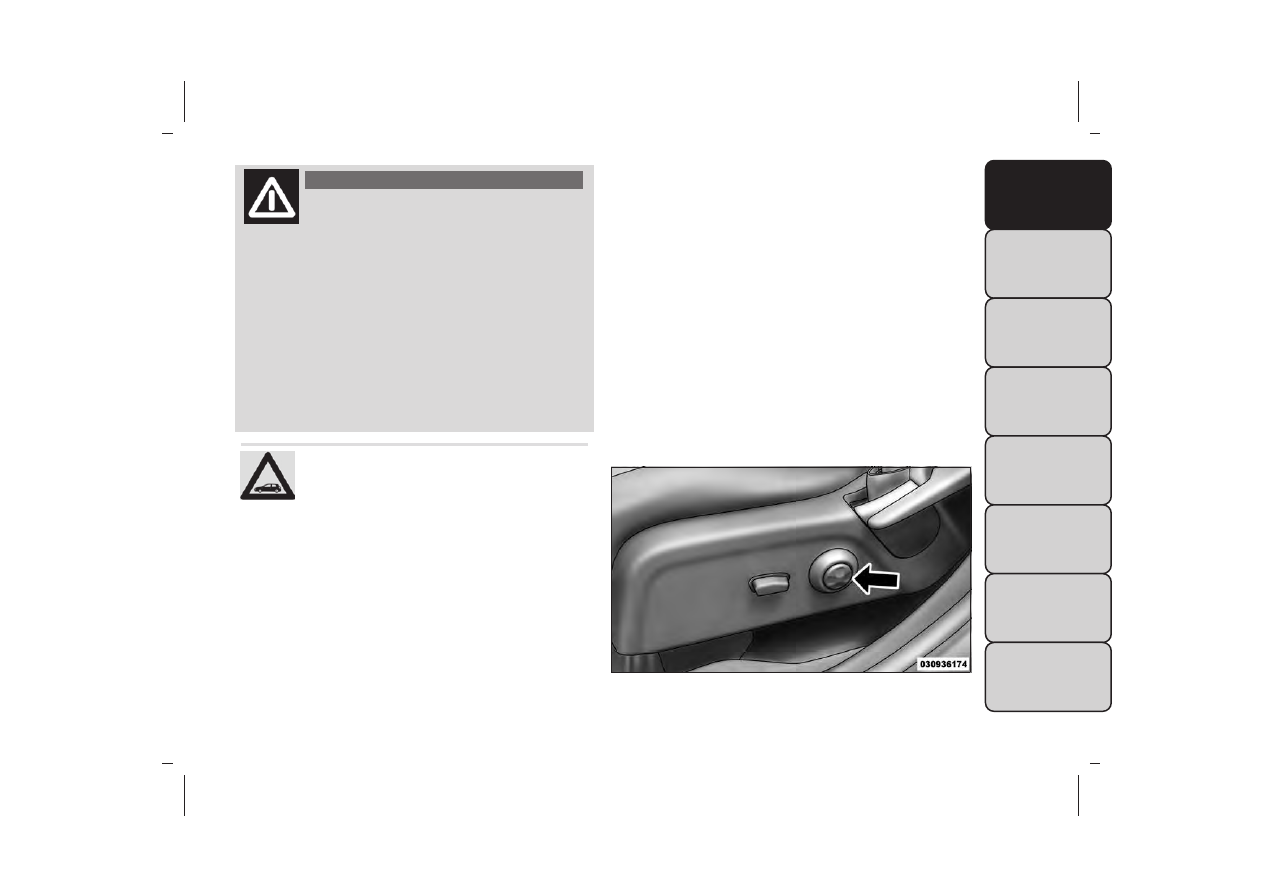Fiat Freemont (2016 year). Manual - part 4

WARNING!
• Adjusting a seat while driving may be
dangerous. Moving a seat while driving
could result in loss of control which could cause a
collision and serious injury or death.
• Seats should be adjusted before fastening the
seat belts and while the vehicle is parked. Serious
injury or death could result from a poorly ad-
justed seat belt.
• Do not ride with the seatback reclined so that
the shoulder belt is no longer resting against your
chest. In a collision you could slide under the seat
belt, which could result in serious injury or death.
Do not place any article under a power
seat or impede its ability to move as it
may cause damage to the seat controls.
Seat travel may become limited if movement is
stopped by an obstruction in the seat’s path.
POWER LUMBAR (for versions/markets,
where provided)
The Power Lumbar switch is located on the outboard
side of the driver's seat. Push the switch forward to
increase the lumbar support. Push the switch rearward
to decrease the lumbar support. Pushing upward or
downward on the switch will raise or lower the posi-
tion of the support.
(fig. 20)
(fig. 20)
Power Lumbar Switch
49